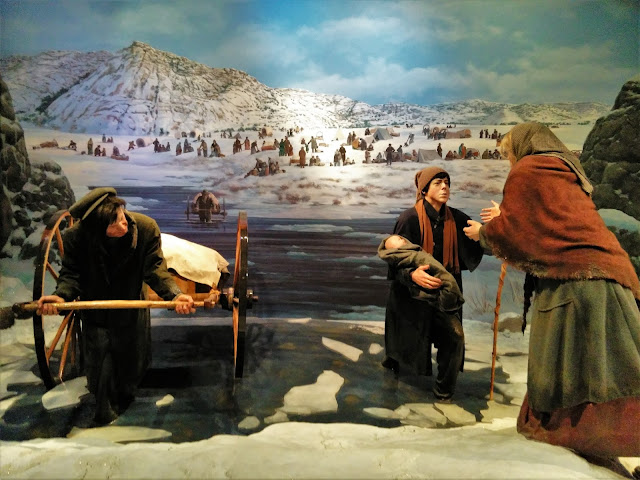
The news from Salt Lake City is not particularly comforting if you’re Mormon. One of the mighty has fallen, a saint from the inmost circle of the Latter-Day Saints. For the first time in thirty years, a man from the First Quorum of the Seventy was told to pack his bags. He was excommunicated.
When I was a boy, the word excommunication was used with fear and trembling. Only once did I sit through a reading of that form from the back of the Psalter; but I remember it well because the whole affair was difficult and therefore dramatic.
Once upon a time, many churches would assess their determination to remain on the paths of righteousness on the basis of their commitment to what we called “church discipline,” a function of the body of Christ recognized as one of the “keys of the kingdom” (Q and A 83 of the Heidelberg Catechism). People believed that if you didn’t exercise church discipline, you weren’t really the bride of Christ. And way out there at the far end of “church discipline” sat excommunication, a ritual no one joked about. It was a different time, a different age.
Except in Salt Lake City, where a man named James J. Hamula was excommunicated, even though he’d been a member the church’s most saintly circle since 2008 and had served as a missionary—full-time, and an elder, a stake leader.
Following accepted tradition, no reason was given, although church authorities did say it was not occasioned by apostasy or disillusionment. That leaves little but scandal, what size and shape will eventually out, I’m sure, as those things do. Simply, the council of discipline reported the man was no longer an officer and no longer a member of the Church of Jesus Christ of the Ladder-Day Saints. Nope. Out.
Seems brutal, medieval. To most of us today, the perfect is often the enemy of the good. And it is.
Four times in my life I’ve been proselytized, a Book of the Mormon placed concernedly in my hands. Thrice in museum visits: once, years ago, in Salt Lake City, at the Tabernacle, where my children—just kids then—went slack-jawed when someone tried to save their souls; a second time at Palmyra, New York, where Joseph Smith discovered the very golden plates that held the Book; a third time just recently at a fine museum commemorating the Mormon Trail and the Winters Quarters, where hundreds of houses were built almost overnight for thousands of Mormons who would spend the winter of 1846 across the Missouri from a town named Omaha.
(By the way, it's okay to sing "Come, Come Ye Saints" at my funeral, even though it's deeply Mormon. It was penned on the Great Trek, not that far from here; and to hear the Mormon Tabernacle Choir's rendition makes me weep. Listen yourself sometime.)
The Mormons do museums with the same righteous diligence with which the keep the church pure—okay, maybe a bit over-the-top by my estimation, but there’s no accounting for taste. Each time, each place, I was handed a Book of the Mormon and beckoned to read it to discover its eternal truth. Each time, I told those decent docents that I already had one, thank you.
And I do, and it’s inscribed, a treasure really, a gift—read on.
My only Book of the Mormon was a gift from two of my high school students—I liked them, they liked me. There were a lot of LDS kids at Greenway High School, Phoenix, Arizona. One of them, Carrie, had conversion on her mind back in 1976, as most Mormons do (she was no relation that I know of to Joseph Smith, although the man had forty wives).
Sadly enough, her mission failed, even though I remember her darling personality, her thoughtful smarts, and her intense work ethic. A whole class of Carrie Smiths, and I could have been teaching in northwest Iowa.
Via the wonders of social media, I stay in contact with Carrie Smith, who’s a grandmother herself these days and, amazingly, evangelical Christian. That's right, no longer Mormon. I didn’t ask why. She seems happy.
Yesterday, to her Facebook friends (which includes me), she sent out a note with a url linking to a Salt Lake City TV station, who had run a story titled thusly: “Losing their religion: Millennials, including Utahans, leaving church.” (The story’s in the title. No need for me to quote chapter and verse).
But that that news came from her, from an actual “jack” Mormon, as the fallen are often called, was somehow notable in my book, in my soul. I bear no grudge, no enmity for her confidence that, way back then, I wasn't among the elect. That she was the one sent out the url, just made me smile.
Why? I suppose it’s just another reminder of two basic truths basic. Good Lord, we all have sinned and stand in need of grace, every last one of us. And somewhere along the line, in one way or another, all of us have been poor James Hamula.
______________
*First appeared here August 9, 2017


































